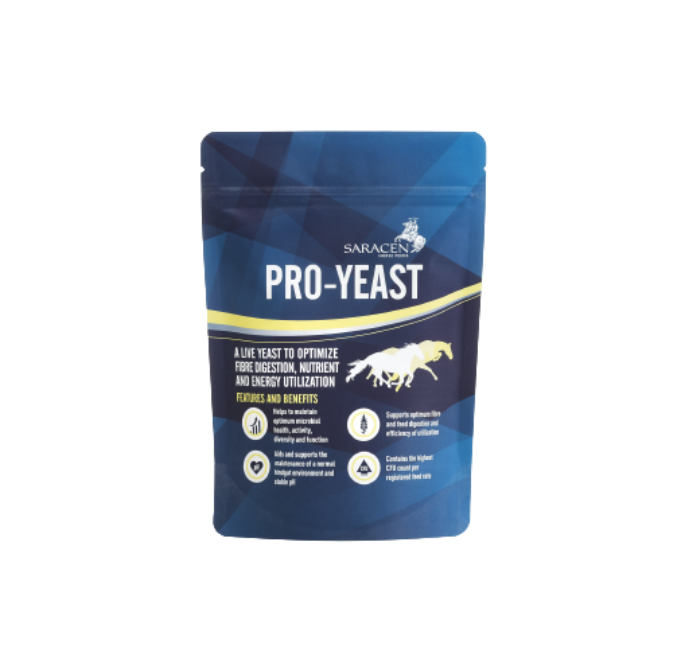Supporting Hindgut Health
Your horse’s hindgut is in many ways the centre of your horse’s digestive system. With fibre making up the largest part of the diet, the horse relies heavily on the fermentation process within the hindgut to digest their feed and produce energy for bodily processes, maintenance of body condition and performance.
Fermentation of fibre is achieved via the billions of microorganisms that live in the hindgut. These microbes convert fibre into volatile fatty acids which provide energy for the horse. As the hindgut is responsible for the digestion of fibre, it is poorly equipped to deal with soluble carbohydrates such as starch and sugar. Large volumes of undigested starch and sugar entering the hindgut can cause the production of lactic acid, which will shift the hindgut into a more acidic state. This can cause some of the fibre-digesting microbes to die off, and the effectiveness of the hindgut can be altered. Sudden changes to feed and forage, stressful events and an overall lack of forage/fibre can also have a similar impact. This is often given the term ‘hindgut acidosis,’ and symptoms can include poor appetite, colic, loose droppings, and the development of stereotypic behaviours, although some horses may show no symptoms at all. Disturbances to the hindgut can cause a cascade of other issues, including hindgut-related laminitis and colic.
Supporting the hindgut
- Ensuring that plenty of forage is available is ideal, as this will ensure the horses hindgut factory is always in operation mode.
- Make changes to both forage and feed slowly to give the microflora time to adjust to new feedstuffs.
- Keep meal sizes small, not exceedingly more than 2kg per meal size.
- Do not exceed more than 1g for every 1kg of body weight in starch per meal.
Feeding a live yeast
Although the above can be sufficient in supporting a healthy hindgut, supplementing your horse’s hindgut can help to optimise the growth of the fibre digesting bacteria. Live yeasts scavenge for oxygen which is toxic to the microflora, and work by outcompeting the ‘bad bacteria,’ and minimising the likelihood of them taking a hold.
The GUT-BRAIN BARRIER can be adversely affected by stress i.e. travelling, competing, breeding and this stress can change the microflora leading to reduced hindgut function and upset i.e. diarrhoea. Supplementing with live yeast can restore the gut to pre-stress conditions much quicker once the stressful period is over.
Pro-Yeast : The Research
Live yeasts have also been found to increase the digestibility of forage and feedstuffs. In one study, two groups were horses were fed a diet that consisted of 70% hay and 30% concentrate diet, with the only difference being the inclusion of 2g/head/day of a live yeast in the treatment group. Faecal samples were collected three times daily and analysed for a variety of digestibility parameters, with the results shown in Table 1.


Pro-Yeast is a research-proven supplement that contains VistaCell, a live yeast that can help to promote a more stable hindgut environment and help to improve fibre digestion. Pro-Yeast works by competing with the lactic acid-producing microorganisms that thrive in a low pH environment, to reduce the additive acid load whilst also removing oxygen from the hindgut. This process makes the hindgut environment more desirable to fibre digesting bacteria which then encourages the proliferation and activity of these microorganisms. The proliferation of fibre‐digesting bacteria leads to an increase in energy supply via volatile fatty acid production which will have a direct effect on health and performance.
Feed Advice Form
Complete our online form to receive a detailed nutritional plan for your horse or pony from one of our registered nutritionists.
Quick Feed Finder
Use our quick and easy feed finder as a guide to select the right feed for your horse or pony.











